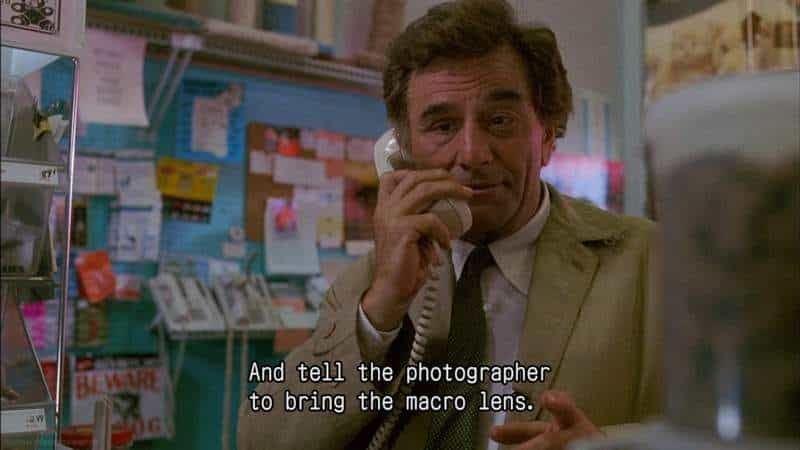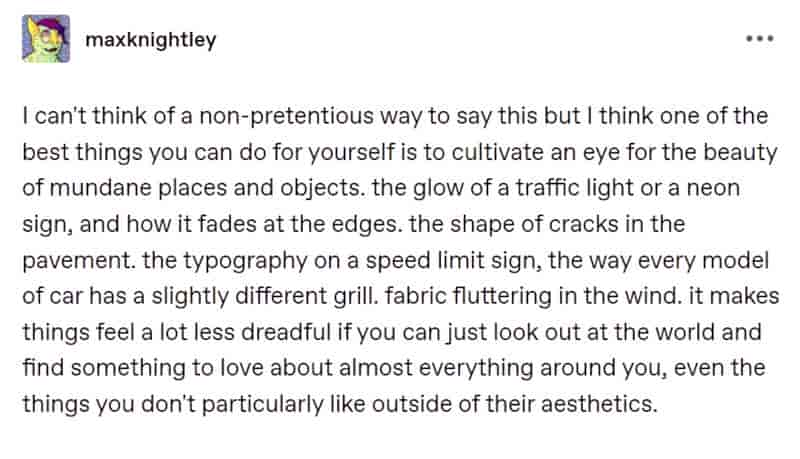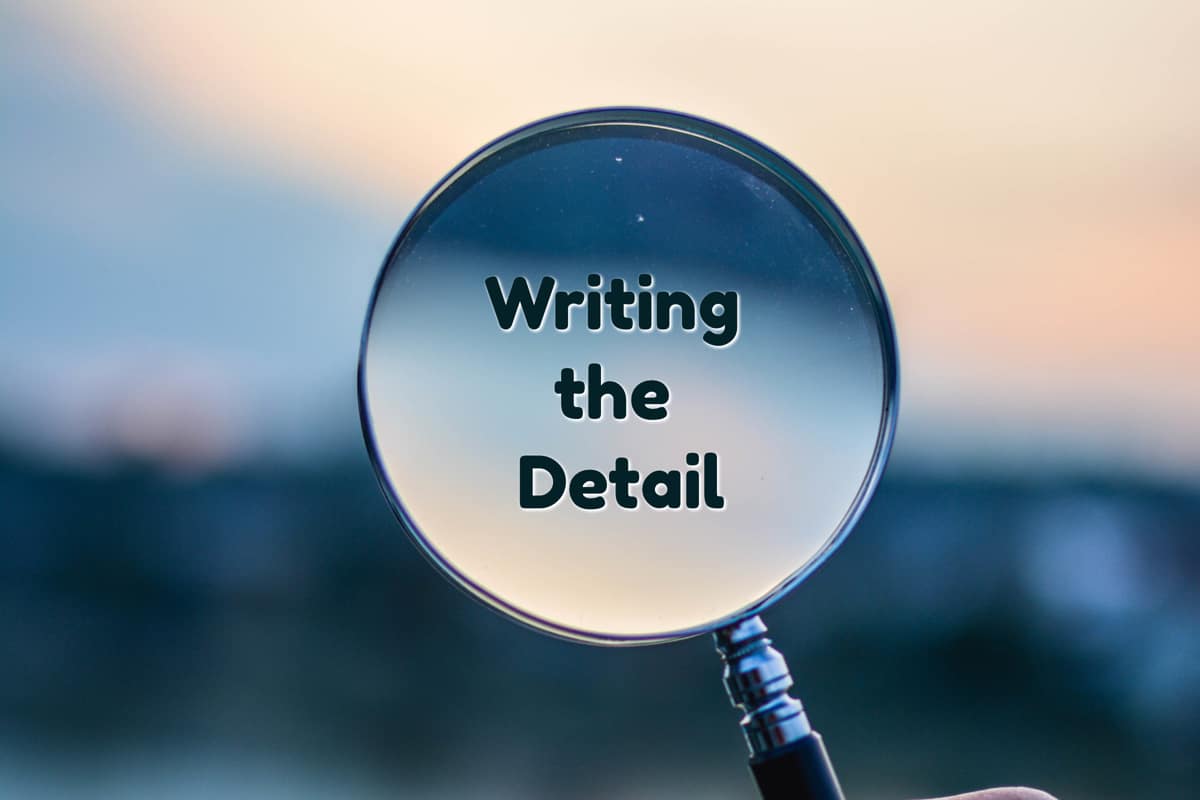The first job of the storyteller is to decide what to leave out and what to include in the narrative.
To spot a liar, ignore everything except the level of detail in a person’s story, new research suggests.
This One Strategy Will Reveal if Someone’s Lying With 80% Accuracy, Study Finds
In terms of sexual advantages, a tale well told can undoubtedly up the storyteller’s charm factor. Tales aren’t bland renderings of narrative events; they are, at their best, colorful, brilliant, and poetically polished. They get gussied up. And when storytellers use ornament and plumage to draw attention to their tales they inevitably draw eyes themselves.
The Evolutionary Case for Great Fiction from The Atlantic
A good reader must fondle the details. A good writer makes details to fondle.
Nabokov
It’s impossible to say a thing exactly the way it was, because of what you say can never be exact, you always have to leave something out, there are too many parts, sides, crosscurrents, nuances; too many gestures, which could mean this or that, too many shapes which can never be fully described, too many flavors, in the air or on the tongue, half-colors, too many.
Margaret Atwood
Even once on the page, not every detail is necessary for the plot. In which case, why keep it? Writers are told to cut, cut, cut.
Use no superfluous word, no adjective, which does not reveal something. Don’t use such an expression as dim land of peace. It dulls the image. It mixes an abstraction with the concrete. It comes from the writer’s not realizing that the natural object is always the adequate symbol. Go in fear of abstraction.
Ezra Pound
But don’t cut everything, just because it doesn’t advance the plot. There are multiple kinds of fictional detail, each performing different functions.
Creating Rich and Detailed Scenarios
- Not only too little information but too much creates anxiety.
- Humans value useful rather than necessarily true information.
If storytellers aren’t careful about detail, the effect can be unpleasantly disorienting:
Literary narratives present readers with dynamic environments that typically contain representations of fundamental features of the external world, including a physical place rich in inanimate objects and living beings. Among the latter, other humans with a distinct set of social relations are often particularly salient. Yet even though the fictive world must have sufficient dimensions of real-world environments for readers to navigate within it, so to speak, it is at the same time a highly artificial environment whose aspects have been carefully selected, unlike those of actual places and spaces. In everyday experience, organisms filter out an abundance of actions and entities that have no relatively meaningful claim upon their attention. Stepping into the street, a person will attend to oncoming traffic rather than the dead worm being eaten by ants or an inexplicably brilliant flower lying in withered leaves by her feet. In the moment before she crosses the street, these objects do not strike her as important stimuli or opportunities for action if a car is barreling rapidly down the street, and she does not attend to them. But a work of fiction is an intentionally produced, cognitive artifact, and if a writer describes each of these features of the environment as a character crosses the street, readers expect those features to have some relevance to the ongoing construction of meaning in the text. (The real woman crossing the street is likewise continuously producing meaning, but her priorities and the bearing of her environment on her well-being are rather different.) In offering itself to our attention as a meaningful, humanly constructed cognitive object, a literary work leaves us unprepared to filter out extraneous elements.
‘Who Was It If It Wasn’t Me?’: The Problem of Orientation in Alice Munro’s ‘Trespasses’: A Cognitive Ecological Analysis
A Camera Analogy
My mind is a camera, and when I write a scene, I’m visualizing the angle of the shot, and the framing, and the movement. Is it a wide establishing shot, or an extreme close-up? Is the camera tracking the action, or are the shots locked off and static?
Ruth Ozeki at The Millions

On-duty and Off-duty Detail
James Wood has his own taxonomy of detail:
There is a conventional but modern fondness for quiet but “telling” detail: “The detective noticed that Carla’s hairband was surprisingly dirty.” If there is such a thing as a telling detail, then there must be such a thing as an untelling detail, no? A better distinction might be between what I would call “off-duty” and “on-duty” detail; the off-duty detail is part of the standing army of life, as it were—it is always ready to be activated. Literature is full of such off-duty detail. […] Nineteenth-century realism, from Balzac on, creates such an abundance of detail that the modern reader has come to expect of narrative that it will always contain a certain superfluity, a built-in redundancy, that it will carry more detail than it needs. In other words, fiction builds into itself a lot of surplus detail just as life is full of surplus details.
James Wood, How Fiction Works
Below, author Charles Yu shows he is a fan of off-duty detail:
Leave things lumpy. People want to know how the protagonist’s father’s dress socks looked against his pale white shins. People want to know the titles of the strange and eclectic books lining the walls of his study. People want to know the sounds he made while snoring, how he looked while concentrating, the way his glasses pinched the bridge of his nose, leaving what appeared to be uncomfortable-looking ovals of purple and red discolored skin when he took those glasses off at the end of a long day. Even if those lumps make the mixture less smooth, less pretty, even if you don’t quite know what to do with them, even if they don’t figure into your chemistry—they don’t have a place in the reaction equations—leave them there. Leave the impurities in there.
Charles Yu
There’s a great danger inherent in a writer’s choice of ‘telling detail’. The detail might ‘tell’ the writer’s own prejudices. Be mindful of the detail chosen to ‘tell’ the reader a character is:
- poor
- disabled
- not white
In these cases, it’s generally safer to tell rather than ‘show’ via ‘telling detail’. Stereotypes are a useful shortcut between writer and reader, but only when writer and reader are complicit in their own privilege to the point where they don’t even see it themselves.
Umberto Eco had a term: ‘wandering gaze’. This describes how when an audience is presented with a scene, for instance one which includes a semi-hidden gun, some members of the audience will notice the gun and others won’t, because everyone in an audience views a scene a little differently, no matter how carefully the artist/writer/film maker guides the eye.

Philip Larkin has apparently said of the James Bond franchise that we believe Hugo Drax will blow up London because he wears a Patek Philippe watch. In the words of Diane Purkiss, sometimes, especially in certain types of story, ‘descriptions simply add verisimilitude to an otherwise unconvincing narrative.
What are the types of story that expect us to derive very specific meaning from detail? Harlequin Romances and James Bond stories. From young adult literature, I’ll add the subcategory of books which are constantly dropping brand names as detail, the standout example being Gossip Girl.
Barthes’s Referential Illusion
Although surplus detail feels like it’s meant to denote what’s ‘real’, all it does is signify it.
Realism in general, it is implied, is just such a business of false denotation. […] Realism offers the appearance of reality but is in fact utterly fake—what [Roland] Barthes calls “the referential illusion.” […] those laurel-leaf haircuts worn by the actors in Hollywood “Roman” films signify “Romanness” in the way that Flaubert’s barometer signifies “realness”.
How Fiction Works
‘Random’ Detail
No detail in fiction is ever truly random, because the writer has chosen to include it, starting from nothing.
Therein lies the difference between fiction and real life. If I walk down a street I’m obliged to take in everything my mind registers, whether I want to or not, but the fiction author picks and chooses the detail most relevant to the reader.
When choosing detail, the storyteller:
- evokes an atmosphere
- paints a much wider setting with minimal clues to reader
- might introduce or reinforce imagery (e.g. a stormy sky in the gothic novel foretells calamity)
In How Fiction Works, James Wood writes of the ‘Flaubertian Randomness of Detail’.
So the modern reader accepts a few things without question:
- The narrator notices stuff that ordinary people walking around would not notice, and can even make imagery out of mundane detail.
- For some reason, the narrator has gone to the trouble of writing it down.
- The narrator is able to pick and choose the detail which is relevant, unlike the rest of us, who walk down a street and take everything in, without any context for story. What we see when we walk down a street may well set off a chain of thoughts, but we’re not in full control of that chain.
‘The reader is happy enough to efface the labor of the writer in order to believe two further fictions: that the narrator was somehow “really there”, and that the narrator is not really a writer.’
James Wood, from How Fiction Works, p55
The world of sci-fi uses ‘chrome’ to describe a type of detail in fiction:
Chrome. From the chrome on an automobile. Scenic detail which has no plot significance but brings a place, character or period to life. (CSFW: David Smith)
Glossary of Terms Useful In Critiquing Science Fiction
Telling versus Lifeless Detail
Rose Tremain’s categorisation is simple:
Learn from cinema. Be economic with descriptions. Sort out the telling detail from the lifeless one.
Rose Tremain
Lavish Backstories
Novelist Donna Tartt endows her characters, however minor, with lavish backstories. No detail is too small. ”Not everything has to serve the plot,” Tartt says. ”Dickens digresses. I like books that are big, busy and bustling. Novels are capacious. Those casual walk-on parts create the illusion of life, which is baggy with people you never see again and get to know fleetingly.”
from an interview with Donna Tartt, Sydney Morning Herald
Leave Out The Unrealistic Memories
Think of a significant moment in your life. Maybe you heard the Twin Towers had been bombed. Maybe someone died. Maybe a stalker chased you through a park.
Which of the details do you remember from that moment?
I’m thinking of one. I remember:
- – What I said
- – How I felt at the time
- – Sequence of events
- – How I felt afterwards
What I don’t remember:
- – What he looked like, much
- – What he said
- – The colour of his eyes!
- – His rippling forearm
- – The sweat across his brow.
And this, fellow writers, must have consequences in fiction. When our viewpoint character looks back in time, don’t get too specific. Memory doesn’t work like that.
We all have an ongoing narrative inside our heads, the narrative that is spoken aloud if a friend asks a question. That narrative feels deeply natural to me. We also hang on to scraps of dialogue. Our memories don’t usually serve us up whole scenes complete with dialogue.
from an interview with Lydia Davis
An excellent example of remembered detail can be found in the aptly named “What Is Remembered“, a short story by Alice Munro. In this story, an older woman looks back at a time in her life when she was unfaithful to her husband. The details she remembers in the close third person narration are signifiers — they have stuck in her memory after all else has faded.
It was in a small, decent building, three or four stories high, inexpensive rather than cheap-looking. All that she would remember about it would be the glass bricks around the front entrance and the elaborate, heavy hi-fi equipment of that time, which seemed to be the only furniture in the living room. […]
She remembered his hazel-gray eyes, the close-up view of his coarse skin, a circle like an old scar beside his nose, the slick breadth of his chest as he reared up from her. But she could not have given a useful description of what he looked like. She believed that she had felt his presence so strongly, from the very beginning, that ordinary observation was not possible. Sudden recollection of even their early, unsure and tentative moments could still make her fold in on herself, as if to protect the raw surprise of her own body, the racketing of desire.
Alice Munro
Robin Black is another short story writer who understands that memory has holes in it. When describing an event which happened 13 years earlier, here’s how she writes it:
Jeremy could only ever remember bits and pieces of those two weeks, the ones when [his daughter] was gone. Merciful amnesia, a friend once called it — except it wasn’t very merciful, because only the worst of it stuck with him. Or so he assumed. Like the first shock at her absence, as too many hours passed for it to be benign teenage tardiness; like walking the streets of London, night after night, as though she might have become a nocturnal creature waiting to reveal herself in the dark; like the dawning nightmarish realisation that he himself was a suspect in her disappearance.
A Country Where You Once Lived by Robin Black
Description Must Work For Its Place
Hilary Mantel is basically saying what Lydia Davis is saying, and demonstrates why writing in close third person is easier (and more modern-sounding) than writing in a truly omniscient voice, for what details would a god notice?
Description must work for its place. It can’t be simply ornamental. It usually works best if it has a human element; it is more effective if it comes from an implied viewpoint, rather than from the eye of God. If description is coloured by the viewpoint of the character who is doing the noticing, it becomes, in effect, part of character definition and part of the action.
Hilary Mantel
Detail in Short Stories
Detail in a short story has to carry a lot of weight. Even more than in novels, everything means something.
In the short story, detail is transformed into metaphorical significance. In a novel, on the other hand, the particular can remain merely the particular. It exists to make the reader feel he/she knows the experience — to create verisimilitude.
Charles E. May, The Art of Brevity, edited by Per Winther
Raymond Carver offers a disclaimer: Even in a poem or a short story the language used to describe this detail does not, itself, have to be startling. Everyday words will still do the trick.
It is possible, in a poem or a short story, to write about commonplace things and objects using commonplace but precise language, and to endow those things — a chair, a window curtain, a fork, a stone, a woman’s earring — with immense, even startling power.
Raymond Carver, On Writing
The Technique of Concatenation
Concatenation: a series of interconnected things.
Below, Julia van Gunsteren uses an example from Katherine Mansfield, who liked to build up imagery throughout a piece by ‘concatenation’ of details:
Little touches are placed side by side and concatenation prevails in Katherine Mansfield’s imagery. One of her methods is to heighten the pictorial atmosphere, by accumulations of comparisons for the same object. The images are swollen and blown up by extra additions.
“Every note was a sigh, a sob, a groan of awful mournfulness.”
“How extraordinary shell-like we are as we are — little creatures, peering out of the sentry-box, ogling through our glass case at the entry, wan little servants, who never can say for certain, even, if the master is out or in”
Julia van Gunsteren, Katherine Mansfield and Literary Impressionism
Detail in Children’s Literature
When You Reach Me by Rebecca Stead won the Newbery Medal. A large part of that was because of her choice of detail. Stead makes every small detail matter. The Newbery judges chose the novel for making the small details important to the plot. Publishers Weekly added that even the smallest of details—Miranda’s name, her strange habits and why she carries A Wrinkle in Time with her—have a reason for their inclusion by the end of the novel.
Cookies and Easter Eggs
Cookie. An element, not necessary to the plot, which rewards the reader who has been paying careful attention. Ideally, a cookie is a clever turn of phrase, an image, an allusion, or some other element of richness which the lazy reader will pass by Then the careful reader, who finds it, realizes that the author has left this small package just as a reward for paying attention … and that, in turn, encourages the reader to pay even more attention. (CSFW: David Smith)
Easter egg. Adapted from computer programming, a specialized form of cookie in which the author ‘hides’ some surprise, not germane to the story (indeed, often irrelevant or irreverent), deep within the text, to be discovered only by the closest possible reading. For instance, in Quest of the Three Worlds, Cordwainer Smith encoded, as the first letters of consecutive sentences, the phrases KENNEDY SHOT and OSWALD TOO, without disrupting the flow of his narrative. Tuckerizing is a form of easter egg. (CSFW: David Smith)
A Glossary of Terms Useful When Critiquing Science Fiction
RELATED
Tips on writing memorable fiction with good use of detail, at Anne R Allen’s Blog
INTERVIEWER
Are you a constant observer, consciously looking for things you can use as a writer?
CHRISTOPHER ISHERWOOD
I think I’m a very unobservant person, one who goes straight to concepts about people and ignores evidence to the contrary and the bric-a-brac surrounding that person. Stephen Spender said an amusing thing about Yeats—that he went for days on end without noticing anything, but then, about once a month, he would look out of a window and suddenly be aware of a swan or something, and it gave him such a stunning shock that he’d write a marvelous poem about it. That’s more the kind of way I operate: suddenly something pierces the reverie and self-absorption that fill my days, and I see with a tremendous flash the extraordinariness of that person or object or situation.
The Paris Review interview, The Art of Fiction No. 49, by W. I. Scobie
AUTHENTICATING DETAIL
If you hear the term ‘authenticating detail’, it’s not easy to Google so here’s a link.
FURTHER READING
Present Everywhere, Visible Nowhere: Flaubert’s Eye for Detail at Fiction Writers’ Review


